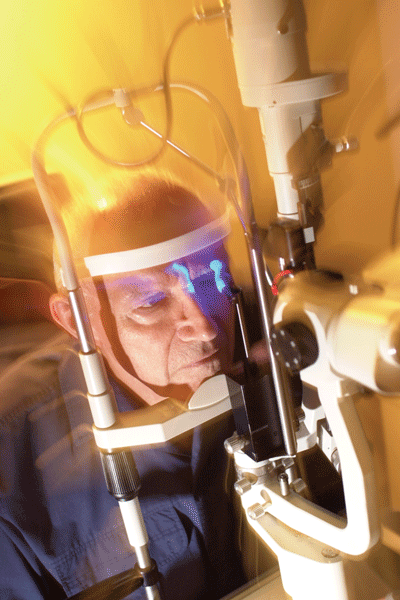Where Are We Now?
In your editorial What Will Women Do to Optometry? in the August 15, 2005 issue, you mentioned the growing tendency of female graduates to work in corporate optometry (e.g., LensCrafters) and how this will affect the future of optometry.
My story is similar to the scenario you outlined. I went to work at a LensCrafters soon after I graduated from optometry school. At the time, it was the best option I had. After less than two years, I was tired of the hours and not being able to make any business decisions. So, my husband and I decided to purchase my own practice. As a result, Ive been working on my own for four years. Ive had my ups and downs, but I am my own boss, and I am well-known locally.
 |
|
To learn more about the role of women in optometry, see "The Changing Face of Optometry." |
If you want a true picture of what women will do to or for optometry, you should survey female optometrists who have been out of school for five to 10 years to see where they are now, not just immediately after graduating.
Rachel V. Mortenson, O.D.
Oelwein, Iowa
Coding for Strabismus
The article Bill Your Patients Medical Insurance (the Right Way), in the February issue, addresses an important topic and should be repeated from time to time.
I have a question that relates to performing additional procedures in conjunction with a medical examination of a new patient. This new patient has strabismus and was referred to me by another O.D.
I would code 92004 comprehensive exam and 92060 sensorimotor exam (a -25 modifier could be added as an additional procedure or 96115).
Subsequent testing was performed for a definitive strabismus workup. I believe these tests could be coded as:
92014 comprehensive exam established
98314 strabismus testing
98315 binocular vision exam
99372 extended telephone conference
99080 comprehensive report
How would you code the services above?
William Moskowitz, O.D.
Somerville, N.J.
Dear Dr. Moskowitz:
Remember that there is never only one way to approach a medical billing situation. Here is how I would handle the above case.
First, because another physician referred the patient to you, this constitutes an office or other outpatient consultation code (99241-5). These codes are described on pages 15 and 16 of the 2006 Current Procedural Terminology (CPT) manual.
In this case, I would want to know the nature of the strabismus to determine the level of patient risk and morbidity required to bill at the defined levels. If the strabismus is long standing, I would consider the risk and morbidity level to be Low two self-limited or one stable chronic illness.
If this is the case, the appropriate CPT code is 99243. Most strabismus codes also link to the CPT code for sensorimotor exam: 92060. If you use this code, you are also required to complete a separate interpretation and report. No modifier would be needed here because CPT states that separate procedural codes are to be simply reported along with the consultation code.
If the strabismus were of sudden onset, this is a much more serious problem. Along with the appropriate strabismus code, I would also use the code for diplopia: 368.2. I would consider the risk and morbidity for this patient to be at least Moderatechronic with exacerbation ora new undiagnosed problem.
If this is the case, I would use the higher-level consultation code 99244 along with the code for sensorimotor exam: 92060. Two other CPT procedural codes are associated with diplopia: 92082 intermediate visual fields; and 92065 orthoptic/pleoptic training with continuing medical evaluation. If your evaluation of the patient indicates the need for these procedures, perform and bill for any or all of the above.
In either case, the written communication to the referring physician is an integral part of the consultation process, so no further billing or coding for communication is appropriate. Continuing care would then be reported using the appropriate evaluation and management codes for an established patient (99211-5). If you performed another sensorimotor exam (92060), append modifier -25 to the E/M code on the CMS-1500 form. It is inappropriate to simply add an E/M code to special testing procedures. The E/M coding requirements must stand on their own merits.
I think that some of the codes you referenced in your letter have been deleted this year, so Im unable to find solid information on them. I hope this response offers one usable approach to proper billing and coding for strabismus referrals.
D.C. Dean, O.D.
Albuquerque, N.M.
The Future is in Glaucoma
The article Its Not Too Late to Start Treating Glaucoma, in the March issue, was excellent and relevant. We need more of the same. Drs. Fanelli and Gaddie are friends of mine, and we have discussed these topics at length. At times while I was reading the article, I think that I had heard myself speaking.
 |
| Glaucoma is an important part of optometric practice. |
Thank you, and great work!
Elliot M. Kirstein, O.D.
Cincinnati, Ohio
More for Patients at the End Of the Road
The points that Dr. Fanelli makes in the Glaucoma Grand Rounds article, The End of the Road, in the February issue, are well taken. Many optometrists care for glaucoma and certainly are capable of following patients to the end of the road.
However, we must not forget that the patient cited in the article has not been cared for solely by Dr. Fanelli. This patient obviously has been co-managed with ophthalmologists and glaucoma specialists. She had argon laser trabeculoplasty (ALT), combined cataract extraction and trabeculectomy with mitomycin C, fluorescein angiography to check on maculopathy of hypotony, etc. Optical coherence tomograph pictures also are displayed.
If I am to follow a patient to the end of the road, I need to make sure that I have explored all necessary avenues of care. I need to ensure that I have covered myself (ethically and legally) by conducting all imaginable tests. Then I will have peace of mind and will let nature and the disease process take their course.
We also should not forget that this patient may benefit from low-vision rehabilitation and counseling to optimize her visual functions for various activities of daily living. These are services that patients highly appreciate and should be part of good practice as much as rehabilitation is an integral part of cardiac care.
Joseph Hallak, O.D., Ph.D.
Hicksville, N.Y.
Simple Subjects Matter
I thoroughly enjoyed the March issue, especially the articles A Game Plan for Better Office Design, The Truth Behind Spectacle Remakes, and Get to Know Your Pharmacist. As a clinician, I crave advice on these simple subjects that fill my workday. I think you are onto something, and I hope you continue to ignore the little voice telling you that these articles are to be dreaded because they are boring. Thank you.
an Oregon O.D.

